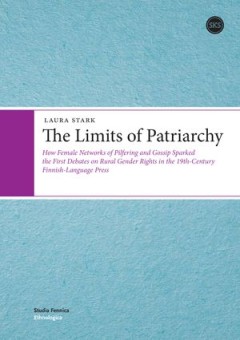Filter by

The Limits of Patriarchy : How Female Networks of Pilfering and Gossip Sparke…
"In the mid-19th century, letters to newspapers in Finland began to condemn a practice known as home thievery, in which farm mistresses pilfered goods from their farms to sell behind the farm master’s back. Why did farm mistresses engage home thievery and why were writers so harsh in their disapproval of it? Why did many men in their letters nonetheless sympathize with women’s pilfering? Wh…
- Edition
- -
- ISBN/ISSN
- 978-952-222-758-4
- Collation
- -
- Series Title
- Studia Fennica Ethnologica 13
- Call Number
- 070.4 STA l

The Limits of Patriarchy: How Female Networks of Pilfering and Gossip Sparked…
In the mid-19th century, letters to newspapers in Finland began to condemn a practice known as home thievery, in which farm mistresses pilfered goods from their farms to sell behind the farm master’s back. Why did farm mistresses engage home thievery and why were writers so harsh in their disapproval of it? Why did many men in their letters nonetheless sympathize with women’s pilfering? Wha…
- Edition
- -
- ISBN/ISSN
- 9789522223272
- Collation
- -
- Series Title
- -
- Call Number
- 909.81 STA l

Peasants, Pilgrims, and Sacred Promises
Lying on the border between eastern and western Christendom, Orthodox Karelia preserved its unique religious culture into the 19th and 20th centuries, when it was described and recorded by Finnish and Karelian folklore collectors. This colorful array of ritulas and beliefs involving nature spirits, saints, the dead, and pilgrimage to monasteries represented a unigue fusion of official Church ri…
- Edition
- -
- ISBN/ISSN
- 9789517463669
- Collation
- -
- Series Title
- -
- Call Number
- 306.6 STA p
 Computer Science, Information & General Works
Computer Science, Information & General Works  Philosophy & Psychology
Philosophy & Psychology  Religion
Religion  Social Sciences
Social Sciences  Language
Language  Pure Science
Pure Science  Applied Sciences
Applied Sciences  Art & Recreation
Art & Recreation  Literature
Literature  History & Geography
History & Geography